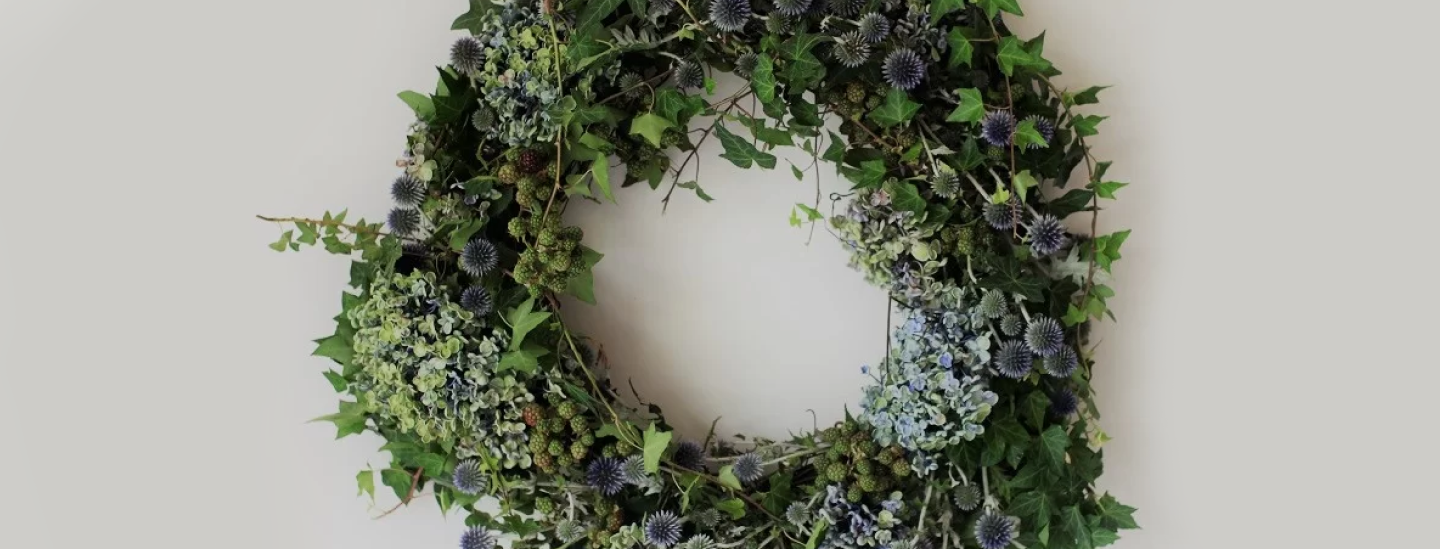Advice for cemetery operators
Traditional floral designs for funerals are almost always in floral foam. However, this single-use plastic has no place in sustainable floristry and recent studies have confirmed it is a problem for the environment.
Fortunately, there are many more sustainable techniques for creating floral tributes. But until these design approaches become mainstream, the way cemeteries manage floral design waste and communicate with their clients can help keep plastic out of the natural environment – and greenhouse gas emissions down.

Cemeteries and the natural environment
Cemeteries can pose problems for the natural environment. In addition to possible local groundwater contamination from the buried corpses(2), issues can also arise from the release of toxic chemicals from embalming and burial practices, and the manufacture of coffins(1).
It is not unusual for flowers to be buried with coffins, or for the flower arrangement to remain on top of the grave for an extended period after the burial.
For flower arrangements in floral foam, this create microplastic contamination as the foam and associated supports deteriorate over time. Floral foam crumbles into microplastics very easily, and a 2019 study confirmed that the product is hazardous for aquatic animals.
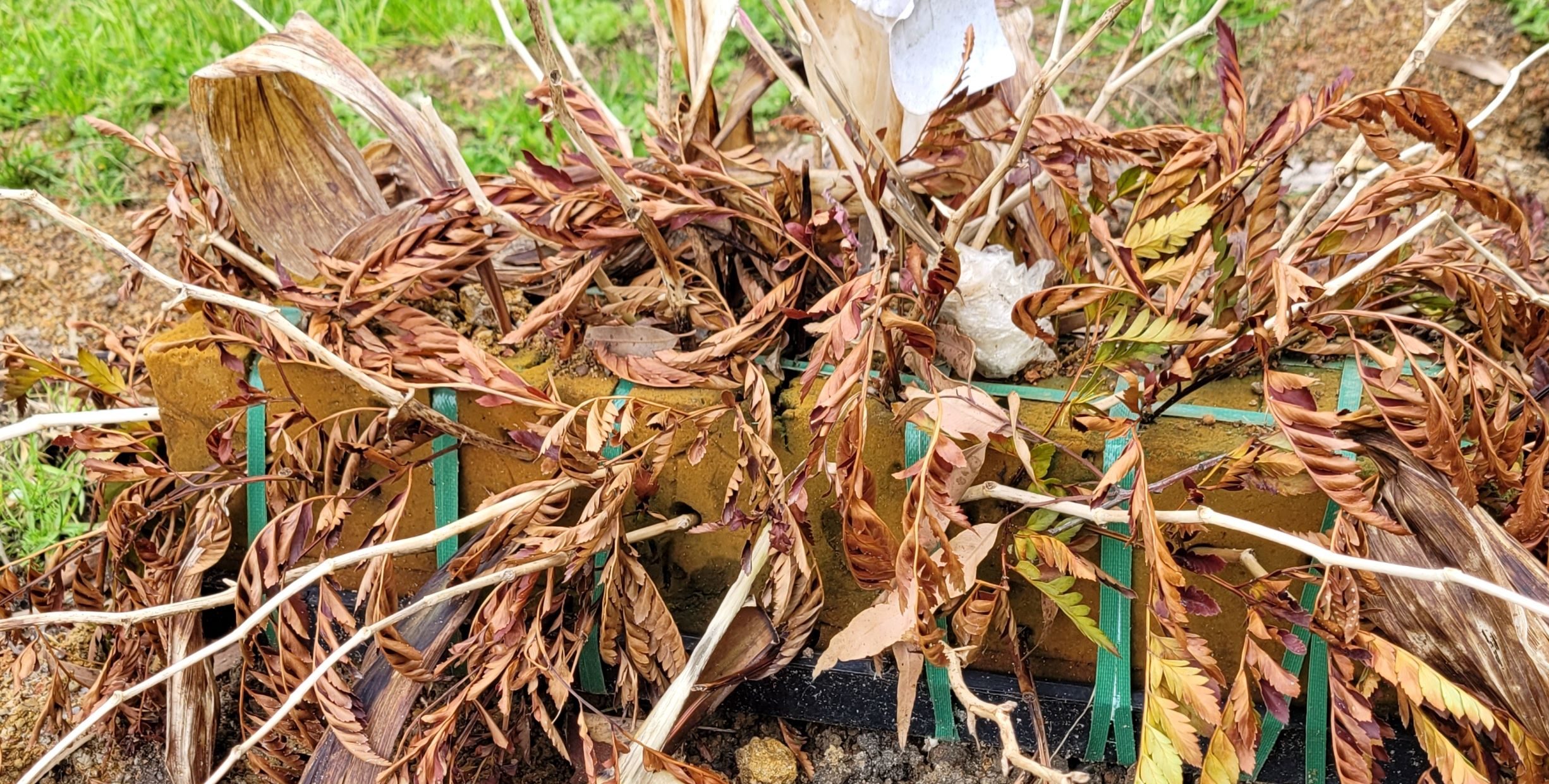
Casket sprays can remain on the grave for a long time after burial.
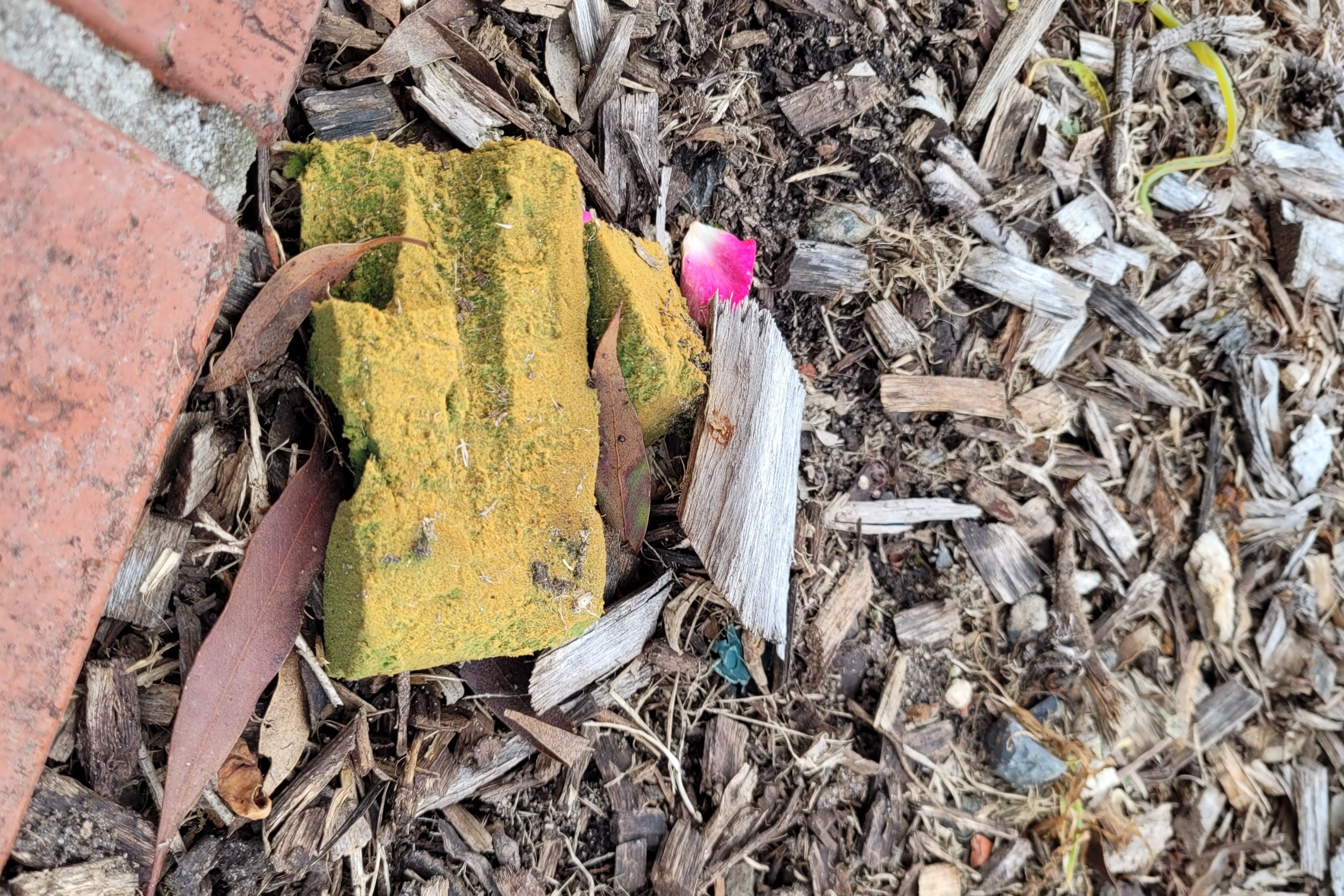
Crumbled floral foam in a cemetery tribute garden.
Funerals – where grief and culture collide
Both funeral industry employees and floral designers are working in emotionally complex settings. The mutual client is managing a person’s end-of-life affairs and is usually in a state of grief. Communication must be managed with sensitivity and compassion.
Our instinct is to reduce stress and provide comfort however possible. Often this equates to giving the client “whatever they want”. The unfortunate flip side to this practice is that many deeply embedded cultural practices surrounding burials can have detrimental impacts on the environment.
It is important to remember that most people do not want to pollute the environment. Gently explaining the most natural options gives clients the opportunity to make a sustainable choice.

Floral tributes at cemeteries can produce a significant amount of plastic waste that can easily make its way into the environment.

Different cultures have different practices associated with giving flowers for end-of-life ceremonies.
Casket designs
A typical casket or coffin decoration contains one to two bricks of plastic floral foam set in a plastic tray. Often adhesive tape or plastic guards are also used to secure the foam in place. Casket arrangements may also include plastic bows, plastic stakes for presenting message cards and water tubes for elevating short stems within the arrangement.

A typical coffin/casket decoration is arranged in floral foam in a hard plastic tray.

A single block of foam in a hard plastic tray.
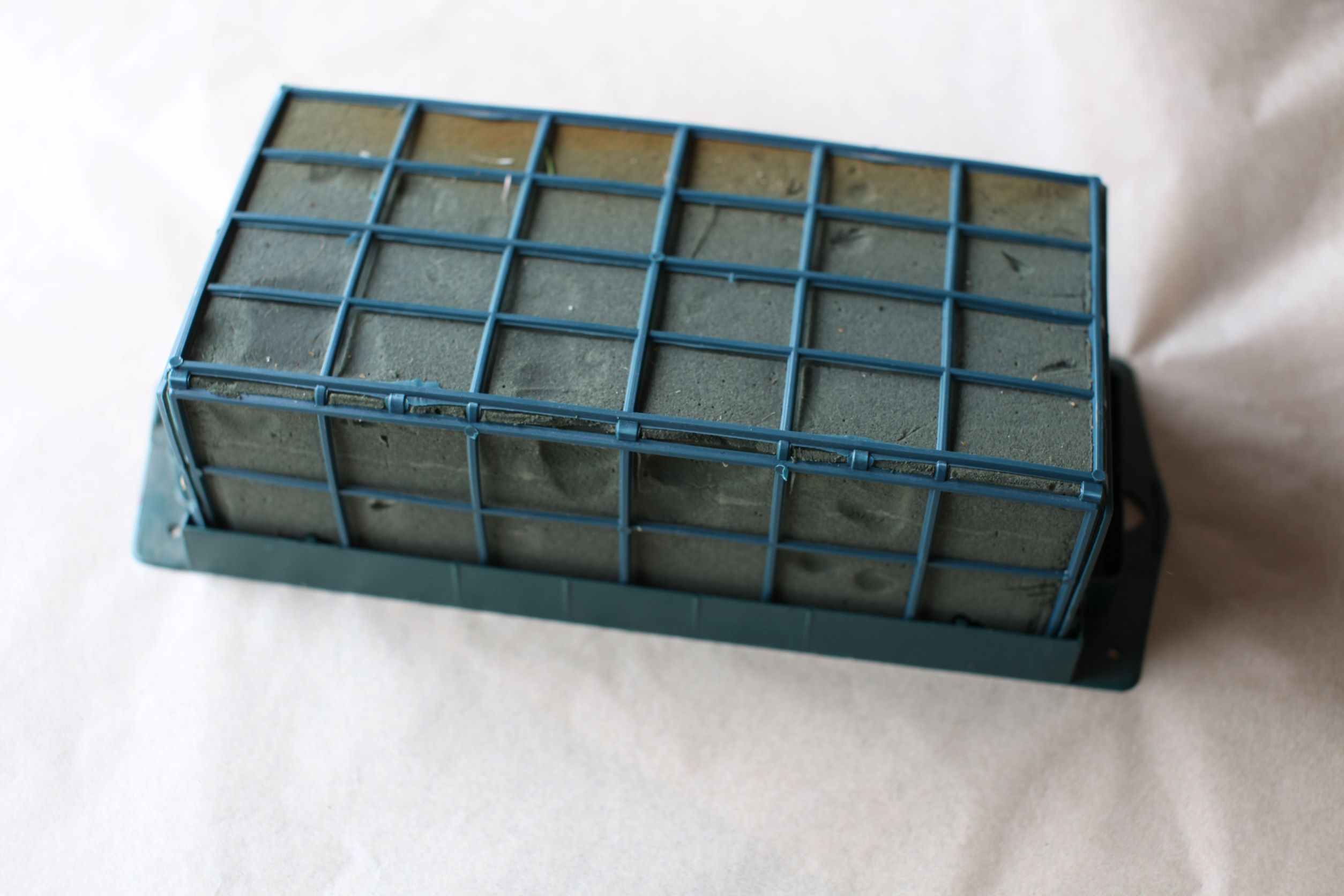
A single block of foam, in a hard plastic tray, covered with a plastic guard. These frames are regularly buried with the coffin.
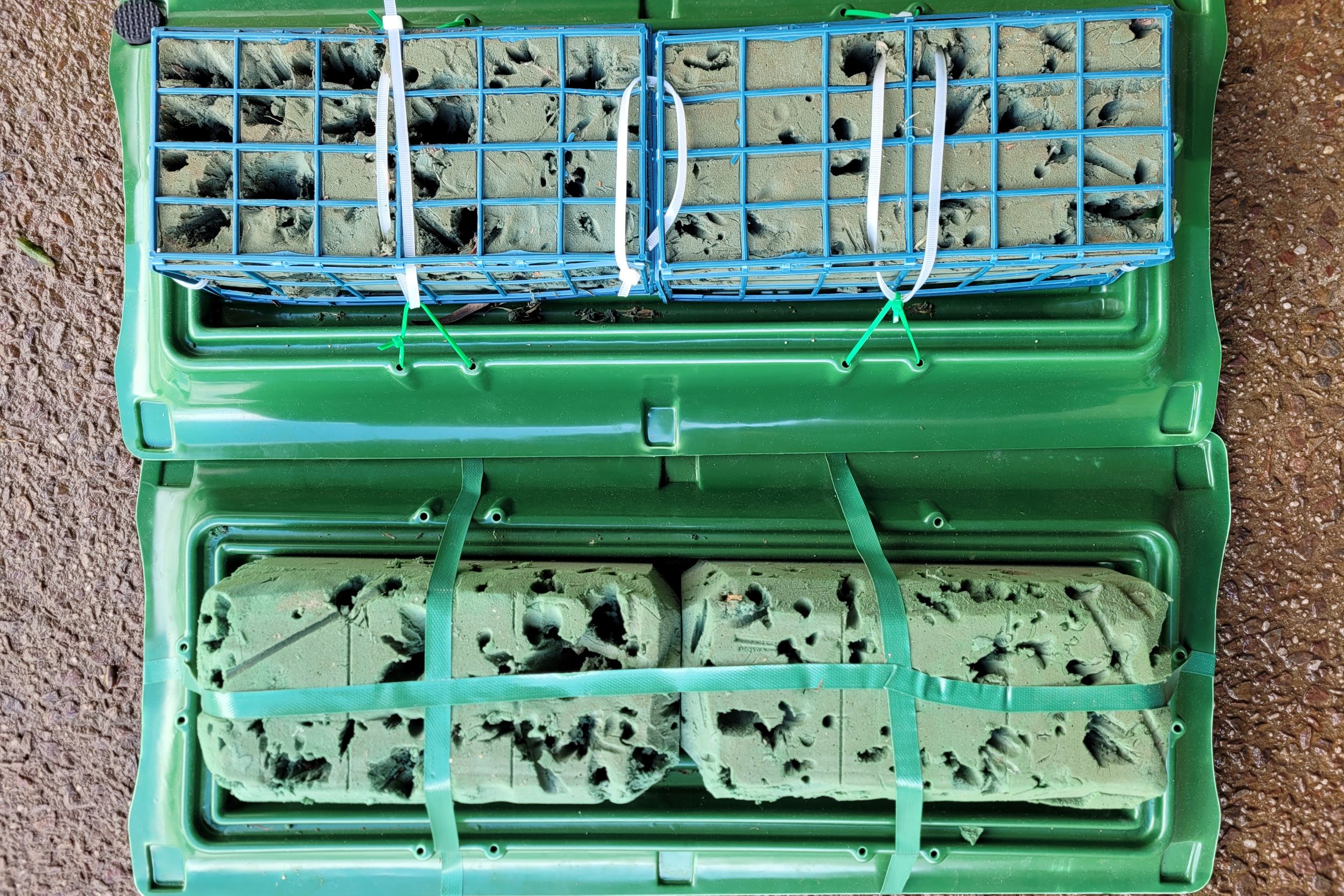
Most casket designs consist of two blocks of foam in a plastic tray.
Flat wreath designs
Flat wreaths or circular/heart/alphabet/cross shapes are also popular tribute designs. The styles of these can vary depending on cultural factors. The most common mediums for these designs are floral foam set in a rigid base, or polystyrene. Both mediums offer a lightweight and cheap solution for flower arranging.
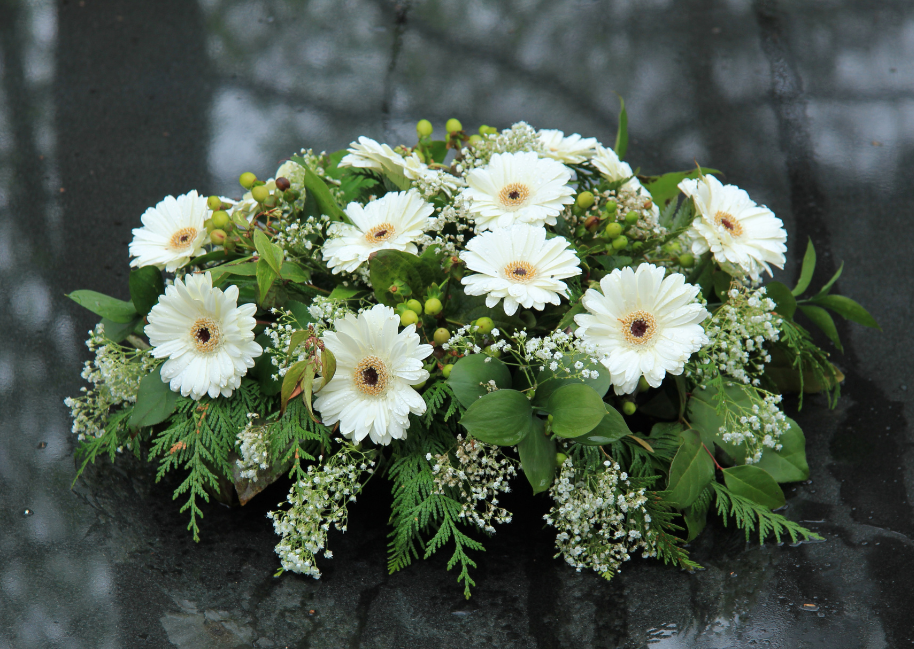
A traditional floral wreath is usually made in a ring of floral foam.

A floral foam base for wreaths allows for the use of flowers that wouldn't last long out of water.

A floral cross is usually created in floral foam.
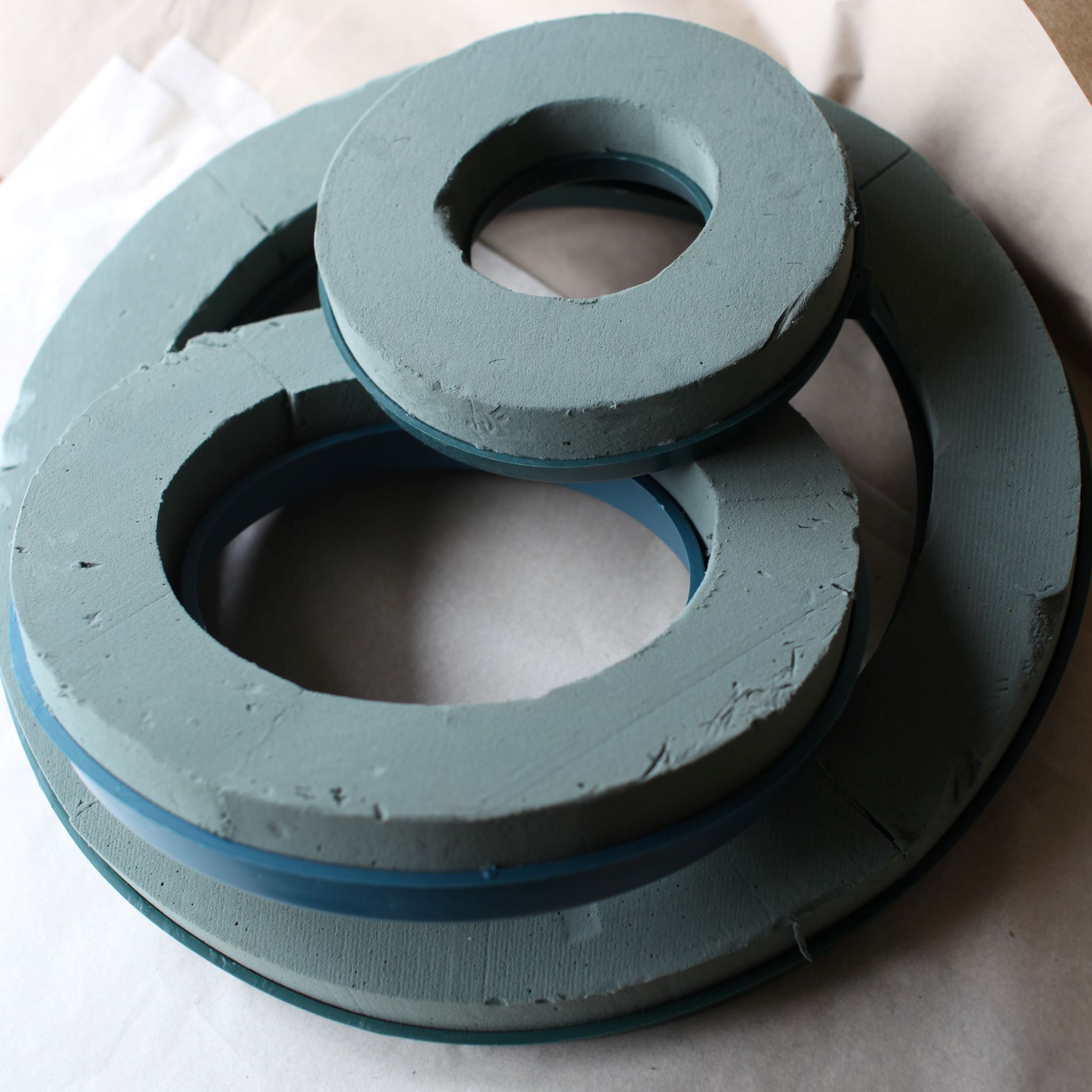
At the base of a wreath is usually a plastic tray filled with floral foam.
The plastic problems
The arrangements described above are all fundamentally unsustainable as they work against greater movements to address plastic pollution in the environment.
The situation is further complicated by the fact that these materials are intermingled with organic materials – flowers and foliage. When removed from foam, flower stems are usually contaminated with plastic foam crumbles, making them unsuitable for composting systems.

When removed from floral foam, flower stems are often coated in crumbles of floral foam.
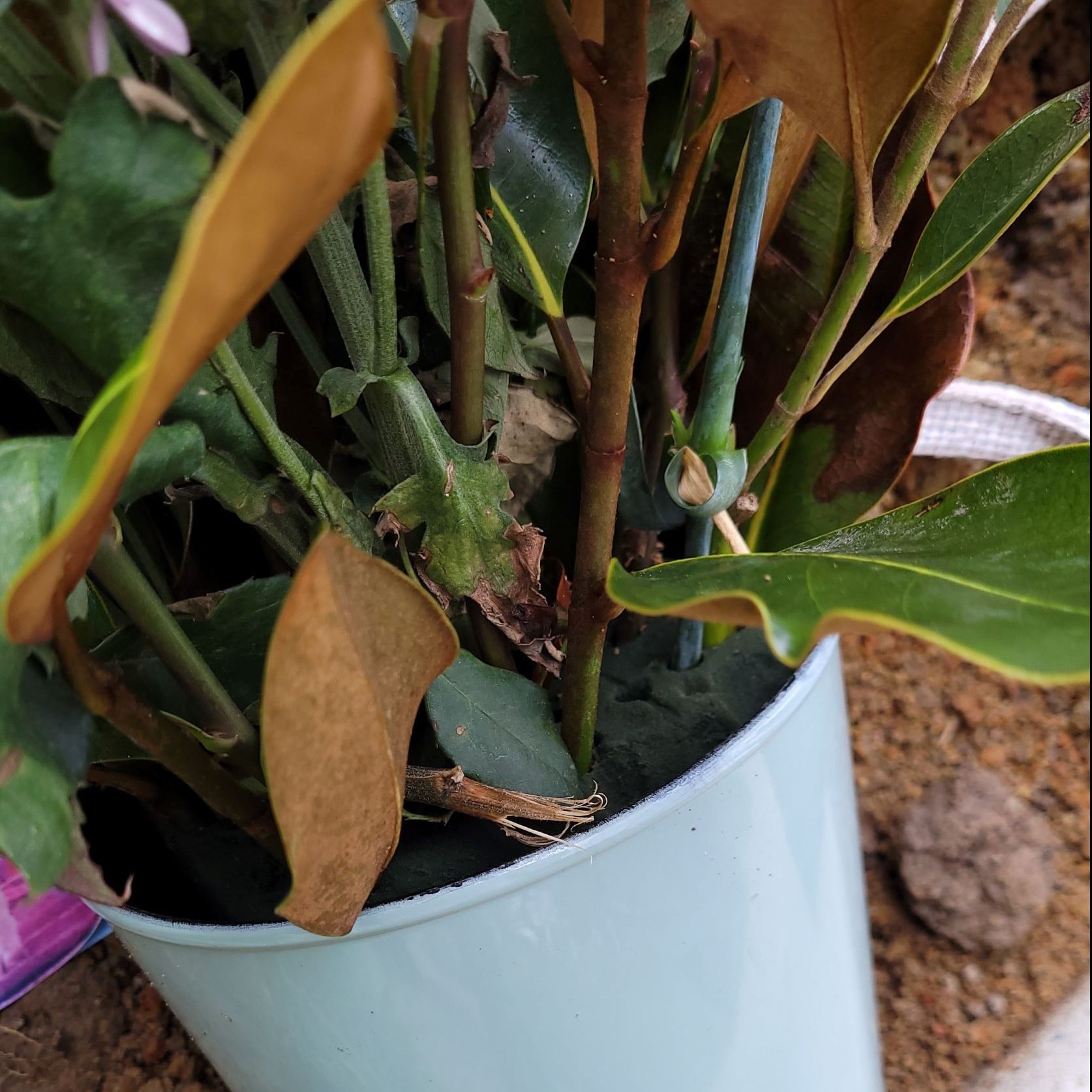
Many tribute arrangements left at cemeteries and necropolises are set in floral foam.
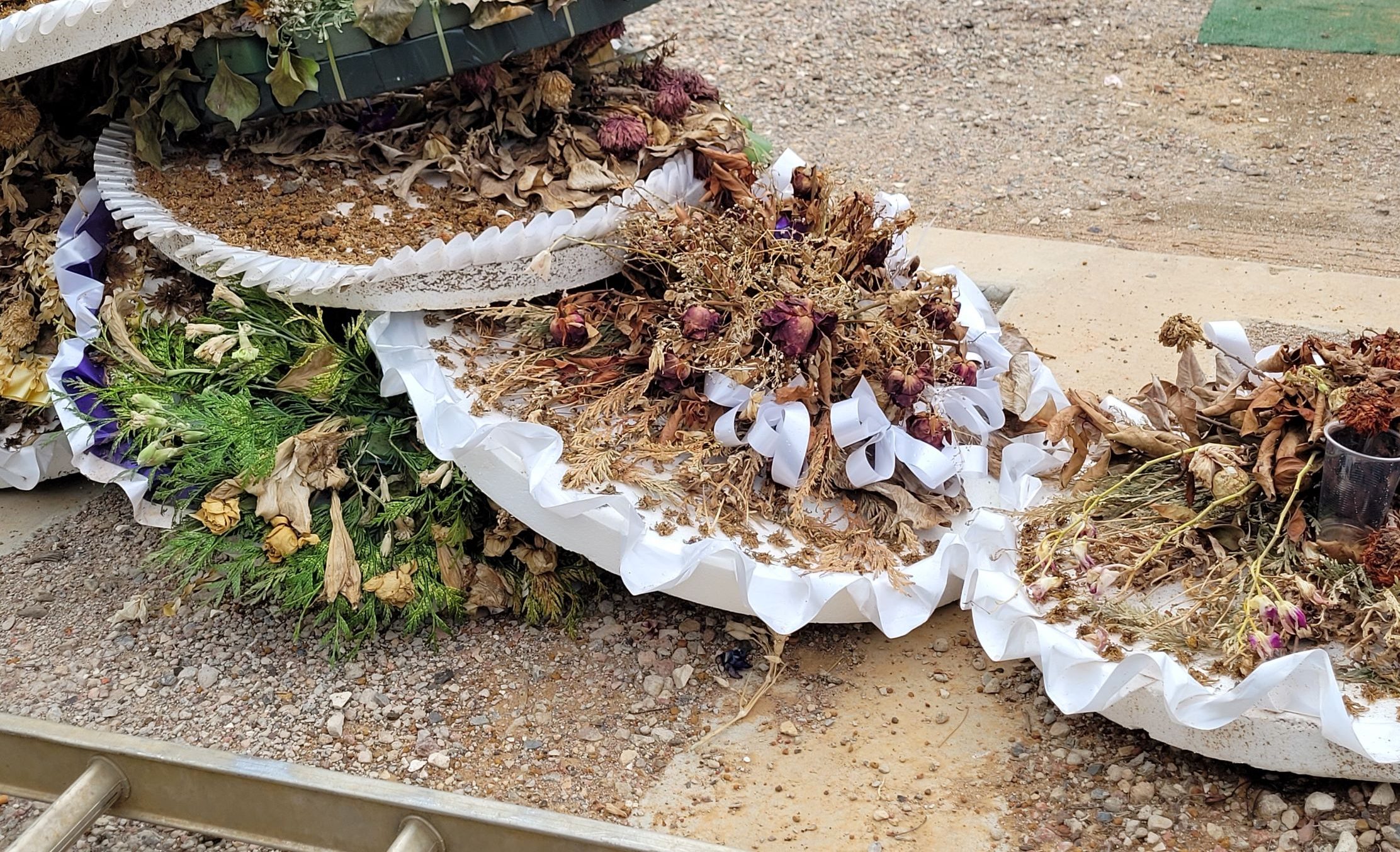
The issue of waste left behind at cemeteries must be tacked by both floristry and funeral industries.
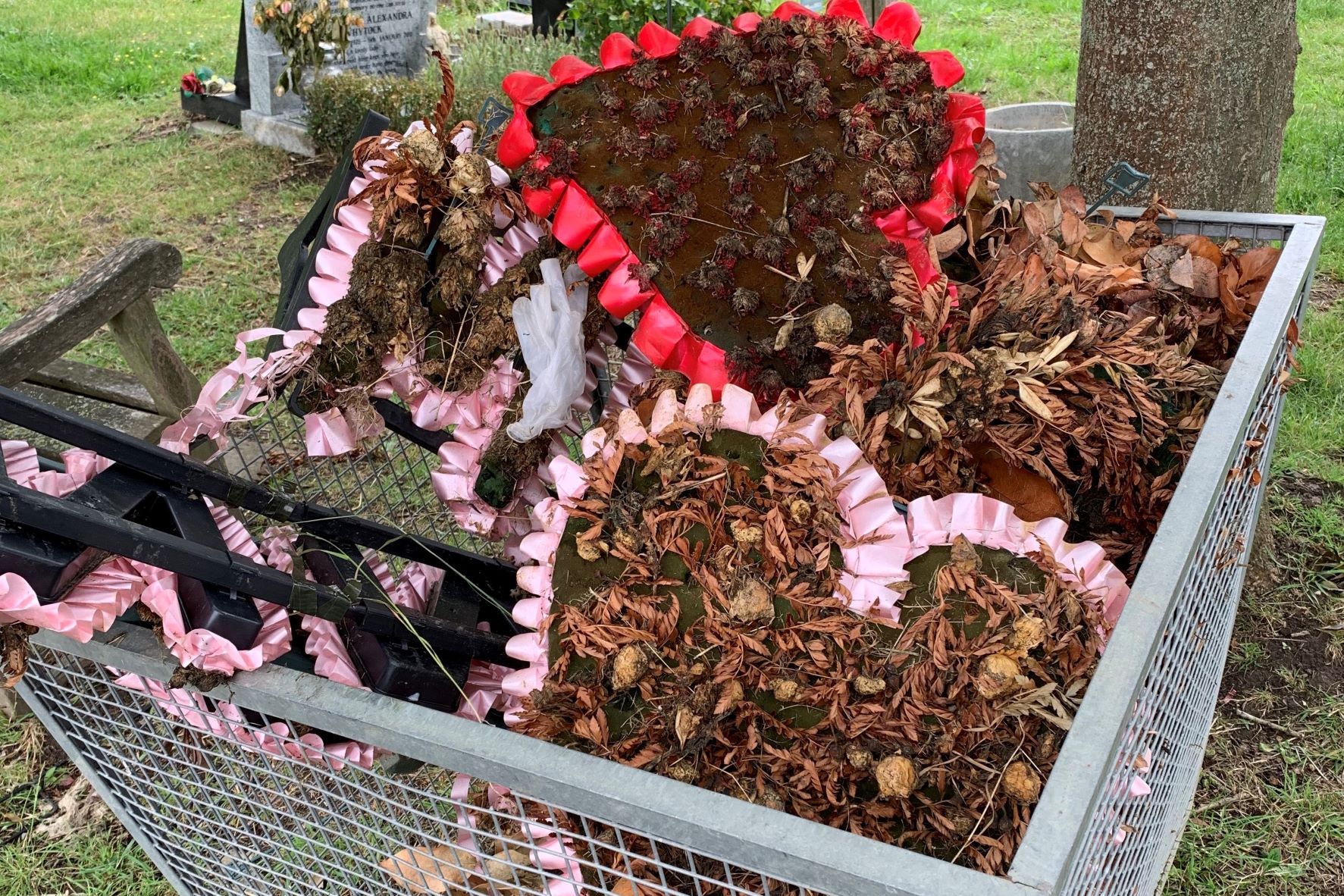
Once in the natural environment, plastic is a problem for everyone.
Addressing the plastic issue
Given the deep cultural practices embedded in burial practices, addressing these sources of environmental plastic pollution is a monumental task. However, fortunately there is a great deal of support from within the floral design industry to change the design practices and incorporate more sustainable/natural products into the designs.
New floral foam alternative products that are safe to bury are now entering the market – although not yet available everywhere. Until they are, skilled florists are returning to more traditional methods of floral design, with hand-tied sheaf designs and handcrafted wreaths using plant material only.
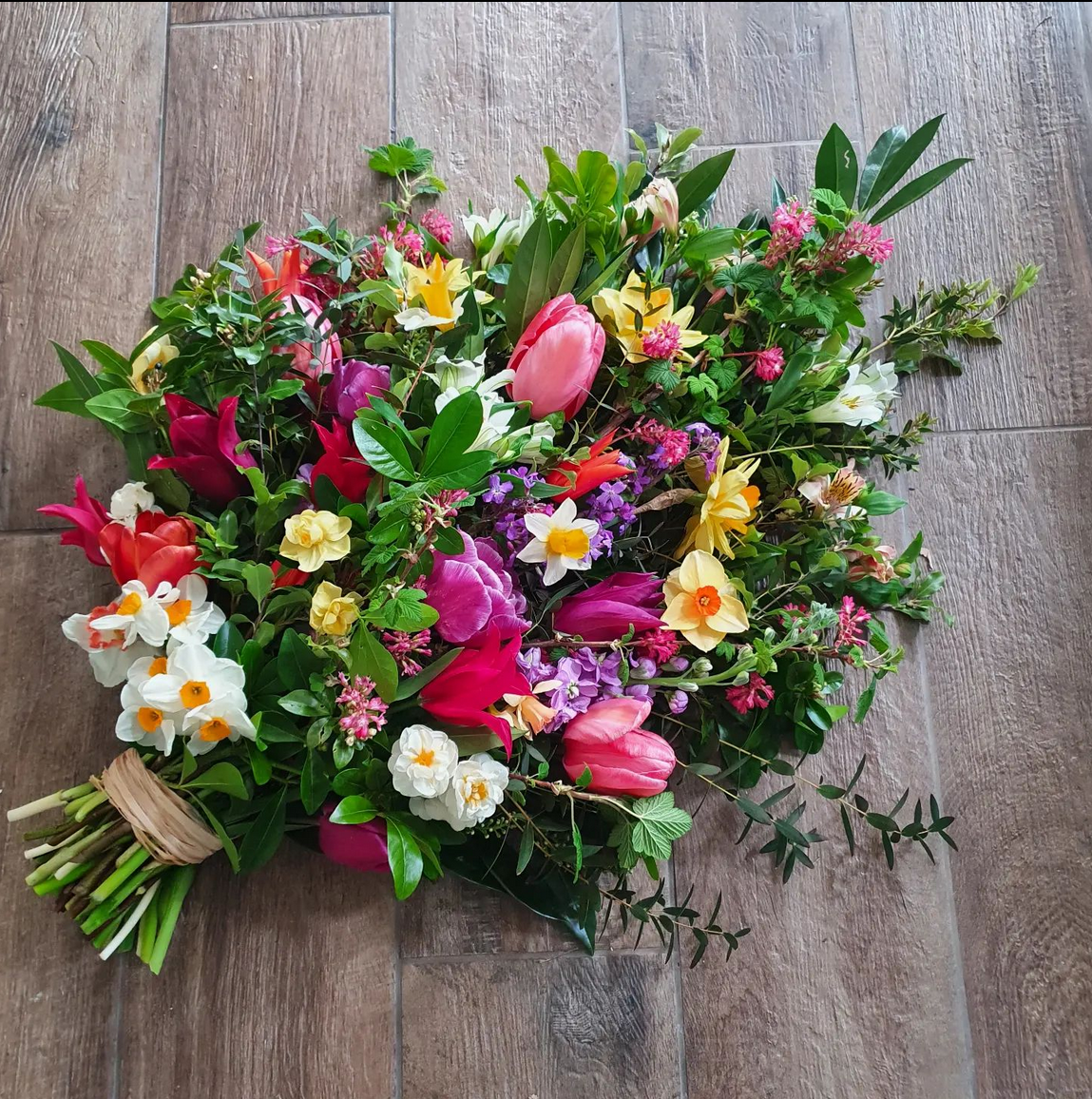
A hand-tied sheaf of seasonal flowers by Pipley Flowers, UK.
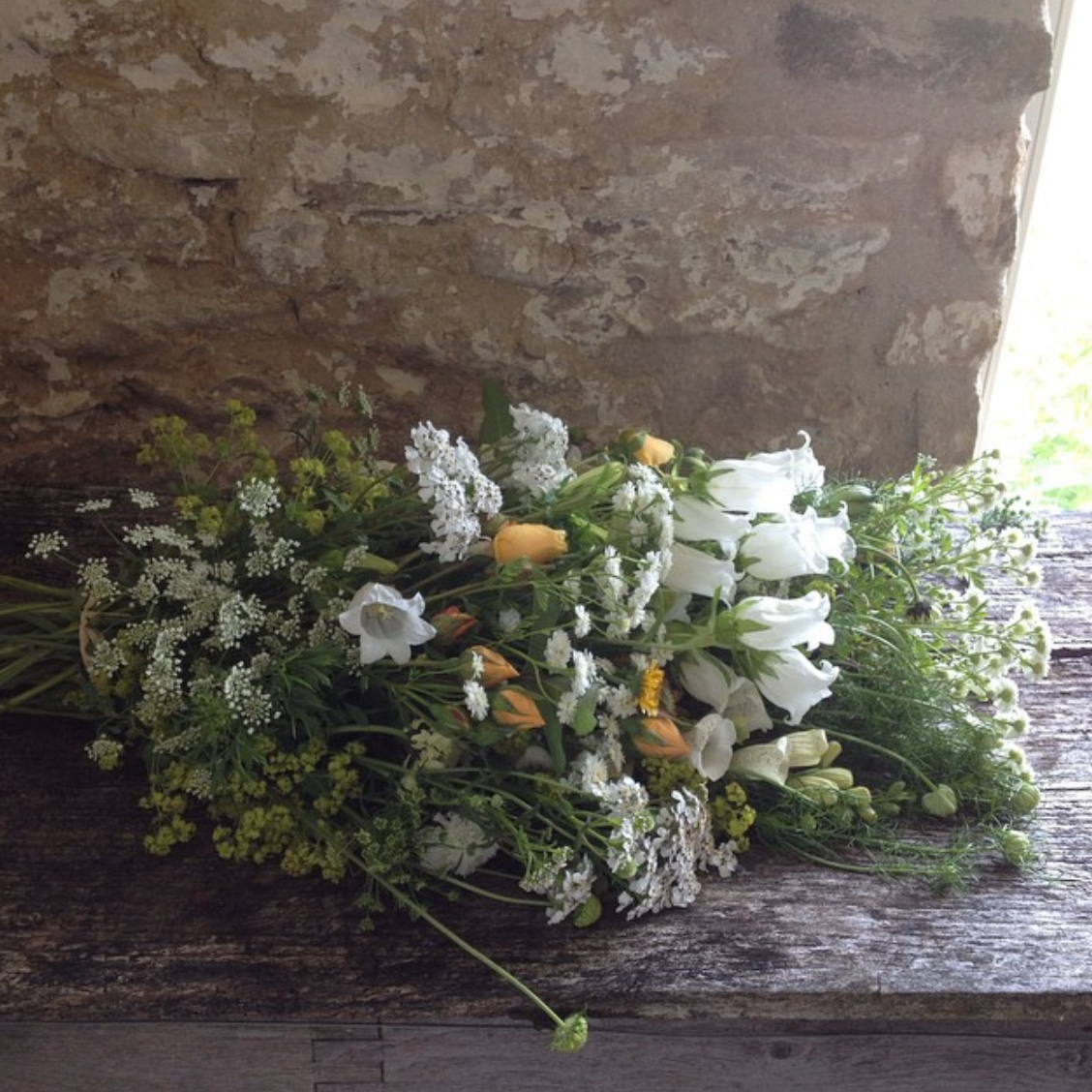
A hand-tied sheaf of seasonal flowers by Common Farm Flowers, UK.
How cemetery and necropolis operators can support sustainable floristry
There are a number of actions cemetery operators can undertake to improve practices and support sustainable floristry:
- Promote eco-friendly funeral tributes
- Consider creating a policy that no plastic is buried. That means removing casket designs in plastic foam/plastic tray/casket saddle from the coffin before burial. State this position on your website/marketing information.
- Consider creating a policy that sees spent flower arrangements containing floral foam removed from gravesites after a period of time to prevent plastic contamination of the gravesite.
- Inform staff about the issues associated with floral foam.
- Provide reusable vessels for gravesite flowers.
- Separate green waste and compost wherever possible. Composting green waste instead of sending to landfill sites reduces greenhouse gas emissions and supports circular economy objectives.
- Create notices for visitors instructing them on how to dispose of flower waste. Make this process as easy as possible by providing suitable bins for organic waste.
Sources
